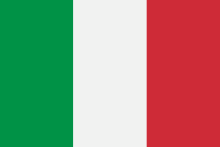Pricing Strategy Calculator & Analysis
This calculator makes tailored pricing recommendations based on your industry and pricing strategy and makes profit projections, and cash flow analyses.
Compare different scenarios, visualize financial outcomes, and make data-driven pricing decisions to maximize profitability.
How to Use the Pricing Calculator
Step 1: Select Industry Type
Choose your industry from the dropdown menu (Retail, Ecommerce, Restaurant, Agency, or Other). This selection helps tailor margin benchmarks relevant to your sector.
Step 2: Choose Pricing Strategy
Select a pricing strategy:High Price, Low Turnover; Low Price, High Turnover; or Balanced Approach. This shapes the recommended margin.
Step 3 Enter Item Details
Item Name: Type the name of the product or service you’re pricing.
Item Cost (€): Input the cost price of the item.
VAT Rate (%): Enter the applicable VAT rate for the item.
Step 4: Calculate Price
Click on "Add & calculate price." The calculator computes the recommended selling price, gross profit, and VAT breakdown based on your inputs.
Remember! You can add multiple items to the list. Just add new ones in the input form and hit “Add & calculate price”.
Step 5: Review Results
View the recommended selling price, gross profit, and a detailed breakdown. Each item is displayed in the results section with options to compare, edit, or remove.
5a: Compare Pricing Strategies:
Use the compare button to visualise different pricing strategies with a bar chart, helping you analyze margins and potential profitability across strategies.
Step 6: Create Cash Flow Scenario
If you wish, once items are submitted, click "Create Cash Flow Scenario" to access the cash flow analysis feature and see the impact these price points will have on cash flow and break-even!
Enter starting balance, fixed, and other monthly costs. Specify sales volumes for each submitted item.
Tip: clicking the arrow below the input fields will copy the amount across to all future fields
Step 7: Generate Cash Flow
Click "Generate Cash Flow" to see a 12-month cash flow projection, including total revenue, costs, and net cash flow. Review the detailed cash flow table and graph.
Tip Modify Scenarios!
Use the "Edit Scenario" button to adjust inputs and refine your cash flow projection to find the perfect strategy.
Analyzing the Results
Understanding the output of the calculator is crucial to making informed decisions for your business. Here's how to interpret the data provided by the tool effectively:
Submitted Items:
This section displays each item's recommended selling price, gross profit, and detailed breakdown, ensuring you have a clear understanding of the pricing structure.
Price Breakdown:
Recommended Selling Price (inc VAT): This is the final selling price including VAT, based on your chosen strategy and calculated margin.
Gross Profit: Shows the profit excluding VAT. It’s the difference between your selling price (excluding VAT) and the cost price.
Details Panel:
Click “View more details” for an in-depth breakdown, including margin percentage, item cost, and VAT analysis. This provides insights into how each component contributes to overall pricing.
Understanding the Cash Flow Table
Starting Cash Balance:
The opening balance for each month helps you track your finances from the start.
Revenue and Costs:
Total Revenue:
Sum of income generated from all item sales.
Fixed Costs, Other Costs, and Variable Costs:
Breakdown of all expenditures, helping you identify major expense areas.
Net Cash Flow:
Indicates the difference between total revenue and costs for the month.
Closing Balance:
Your ending balance, providing a forecast of financial health over time.
Reading the Cash Flow Graph
Net Cash Flow Line:
Shows fluctuations in monthly cash flow, helping you understand periods of high or low liquidity.
Cash Balance Line:
Illustrates your closing cash balance each month. A rising line indicates financial stability, while a drop might prompt cost reassessment.
Interpreting the Chart Comparisons
Bar Chart Analysis:
Compare different pricing strategies visually. Look at how each affects profit, VAT, and cost.
Use the chart to gauge which strategy offers the optimal balance between turnover and profitability.
Making Informed Decisions
- Review both the table and graph to identify trends and patterns.
- Consider adjusting pricing strategies if certain items show lower margins or excessive VAT components.
- Use insights from cash flow analysis to plan expenditures, optimise sales, and understand seasonality impacts.By thoroughly analysing these elements, you can make strategic pricing decisions that drive profitability and ensure financial health for your business.
Discover Trezy with an expert
Get a personalized 30-minute demonstration with our team to see how Trezy can transform your cash flow management.







